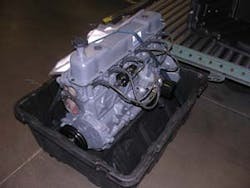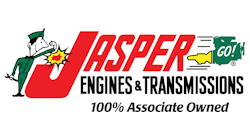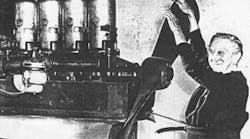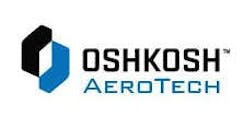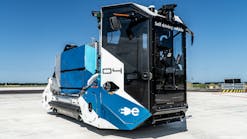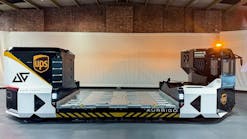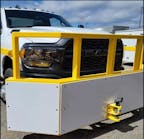With a focus on maintaining equipment in a fleet, there are many options available to keep tractors in operation on the ramp, including the replacement of components that commonly need it, such as engines and transmissions.
And just what is the difference between a rebuilt or remanufactured engine — or is there even a difference? According to Bob Boeglin, national sales manager at Jasper Engines and Transmissions, there is a significant difference. A remanufactured engine differs from a rebuild in that it features not only new parts — but upgraded parts. “When you remanufacture an engine, you are updating it with new technology,” he says.
Jasper has specialized in the remanufacture of a diverse line of engines and transmissions across a varied range of fleet types, including ground support equipment.
Here we will look at Jasper’s remanufacturing process for one type of engine commonly found in GSE: the Ford 4.9 liter.
Remanufacturing Process
When it comes to remanufacturing the Ford 4.9 liter engine, the company begins with a process of stripping the engine of basically all its parts down to the block. The block is then thoroughly cleaned and inspected for any flaws or cracks in its dimensions.
Castings such as camshafts, crankshafts, connecting rods and heads are also thoroughly cleaned and inspected for flaws and possible cracks. If proven to be suitable for reuse, they are modified to be brought back to industry standards with special considerations for finishes and diameter that ensure smooth operation and long life.
The block is then transferred to another area where the surface is inspected, and it is then remanufactured to correct any defects caused from usage, such as warped dimensions from heat. The cylinders are inspected and finished (boring and honing) to industry standards.
The engines are then reassembled with the block and castings. Many of the smaller parts, such as pistons, bearings and rings are replaced with new parts.
The company also performs updates to the engine during reassembly. The updates are determined through studying units as they come through the doors. “It’s a combination of analyzing engines that come to us as cores and also analyzing engines of ours if we have a failure,” says Mike Pfau, advertising manager at Jasper Engines and Transmissions.
Jasper has identified updates specific to the 4.9 liter engine, such as a dished piston to supply an adequate compression ratio and prevent detonation. See Table 1.
Once reassembly has been completed, the engine undergoes final testing. “We check for vacuum, compression, oil temperature and pressures,” Pfau says. “We also check for leaks by putting a dye in the oil and inspecting the engine with a blacklight.”
So why should one look to a remanufactured Ford 4.9 liter engine, which went out of production in the 90s, over a rebuilt or overhauled version? According to Pfau, the answer is in the details. “There is going to be an extensive process that is done to the engine,” he says. “One option is to buy a used engine, and you already have a used engine. I think with a remanufactured engine, you are having a more thorough process done to it, and you are having updates performed as we do. So the engine is in many cases better than it was originally. You also have warranty coverage.”
